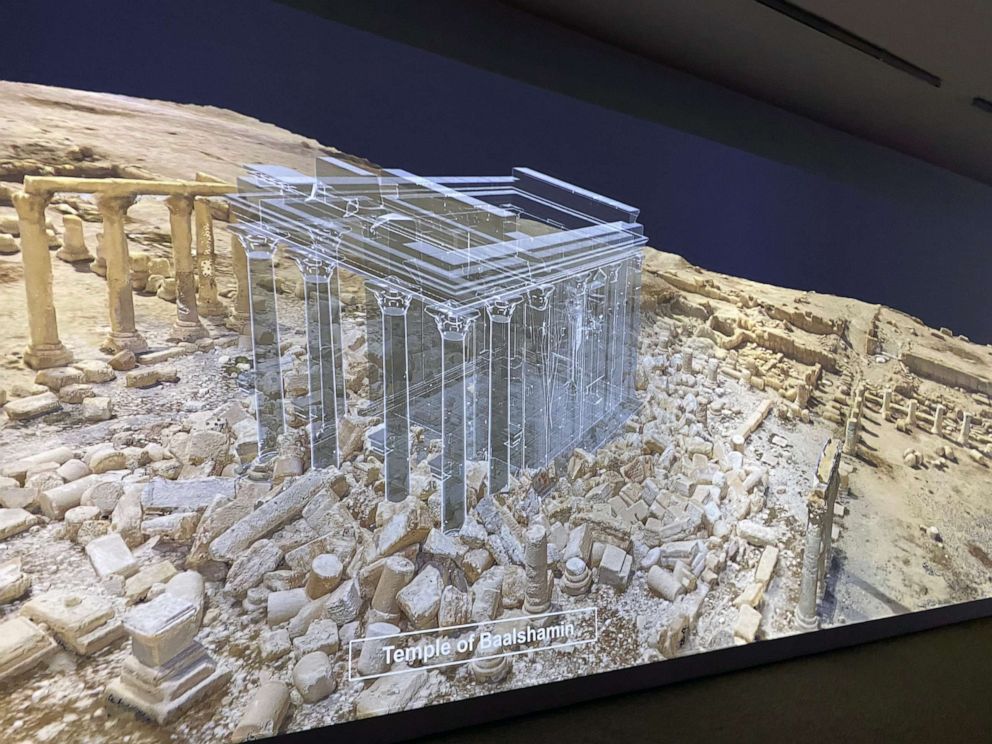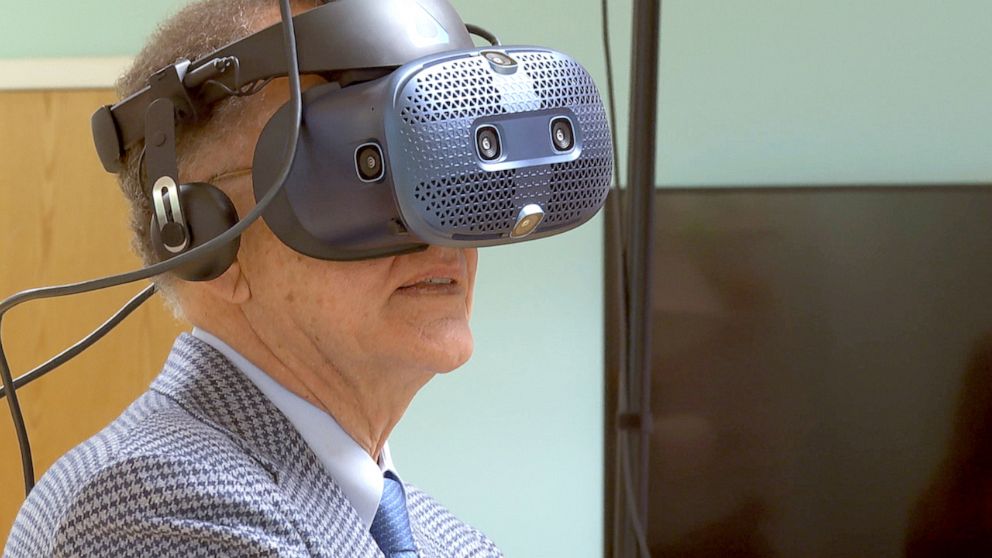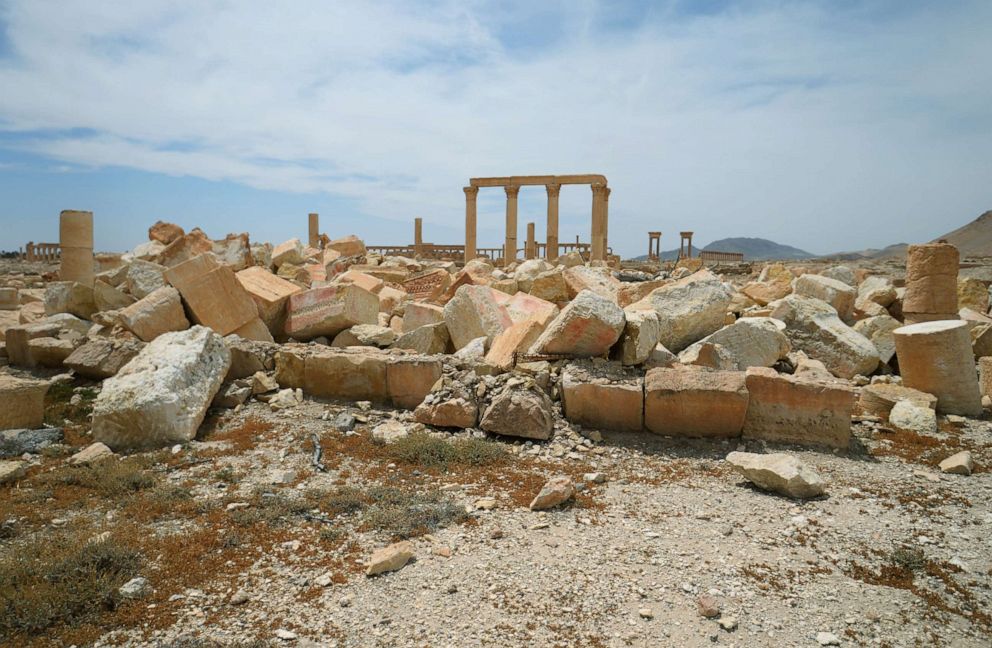New Smithsonian exhibit takes people through ancient Arab cities destroyed by war and ISIS
The exhibit allows people to walk through recently destroyed ancient Arab sites.
The Temple of Baalshamin -- destroyed in 2015 by the Islamic State -- has been restored inside a Washington gallery.
At an exhibit displaying reconstructed ancient Arab cities ravaged by violent conflicts, a projection fills a wall with an image of the destroyed temple in Palmyra, Syria, and then shows the temple slowly coming back together.
"What it narrates is cultural destruction and -- and I emphasize -- and the remarkable strength and resilience of men and women who chose to remain behind in those cities to fight for their survival, indeed to fight for the reconstruction," said Chase F. Robinson, Dame Jillian Sackler director of the Arthur M. Sackler Gallery and the Freer Gallery of Art.

The Arab World Institute exhibit arrived in the nation's capital -- not too long after President Donald Trump backed off his threat to strike Iranian cultural sites amid tensions earlier this month.
The exhibit, called "Age Old Cities: A Virtual Journey from Palmyra to Mosul," highlights the cost of war and the importance of cultural preservation.
Freer Gallery of Art and Arthur M. Sackler Gallery assistant curator Simon Rettig first saw the virtual exhibit in Paris last year and proposed the idea of bringing it to the Smithsonian. He said the exhibit delivers a "strong statement" on the importance of safeguarding cultural world heritage, and could ultimately help support the rebuilding of those cities.
At the exhibit, people can watch interviews of those who witnessed the destruction of their cities and participate in a virtual reality experience at five cultural heritage sites in Iraq and Syria. In the virtual reality experience, created by video game company Ubisoft, participants can see first-hand the damage done to historical locations such as the souks of Aleppo and the mausoleum of Nabi Yunus.

The three cities on display saw massive destruction in the midst of conflict. In 2014, ISIS captured Mosul, Iraq, and destroyed cultural sites such as the Great Mosque of Al-Nuri. Much of the same type of destruction occurred in Palmyra. Aleppo, the second largest Syrian city, was gripped by violence in the country's ongoing civil war.
A large map pinpoints exactly where the three featured cities are located and there's information about the uprisings that triggered violence across the Middle East. Around the map, large-scale depictions of the destruction slowly morph into the full historic sites that once existed there.
After Palmyra, the exhibit takes visitors through Aleppo and Mosul to witness the war-torn cities restored to their former glory.

"It's a world history and a world heritage. And so, just to understand, to preserve this heritage for the next generation is the main goal of this exhibition," AWI Curator Aurélie Clemente-Ruiz told ABC News.
Bastien Varoutsikos, Iconem director of development, said that his company was responsible for flying drones over the featured sites to capture thousands of pictures, which aided in the digital reconstruction of the ancient cities.
Not only do the digitized reconstructions help raise awareness about cultural preservation, but they also serve as blueprints that help in the physical rebuilding of those cities, he said.
The rebuilding process involves ethical questions about whether certain destroyed areas should be restored, but Varoutsikos said using drones to protectively capture images and measurements of the historic sites could help with potential reconstruction.
The projections show exactly where bombings destroyed the cities and where sites existed before the violence.
The exhibit opens this weekend and will be on display until Oct. 25.




